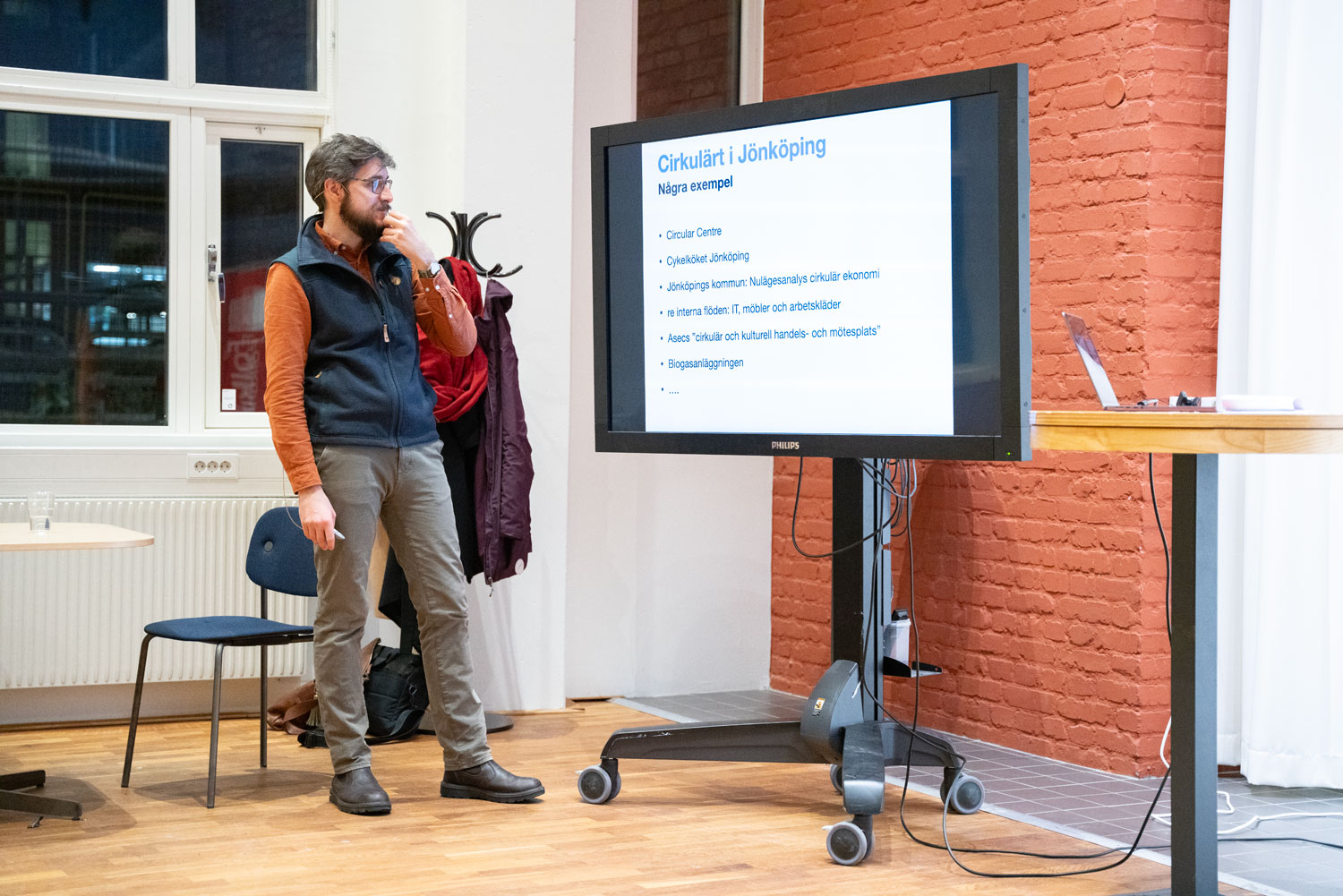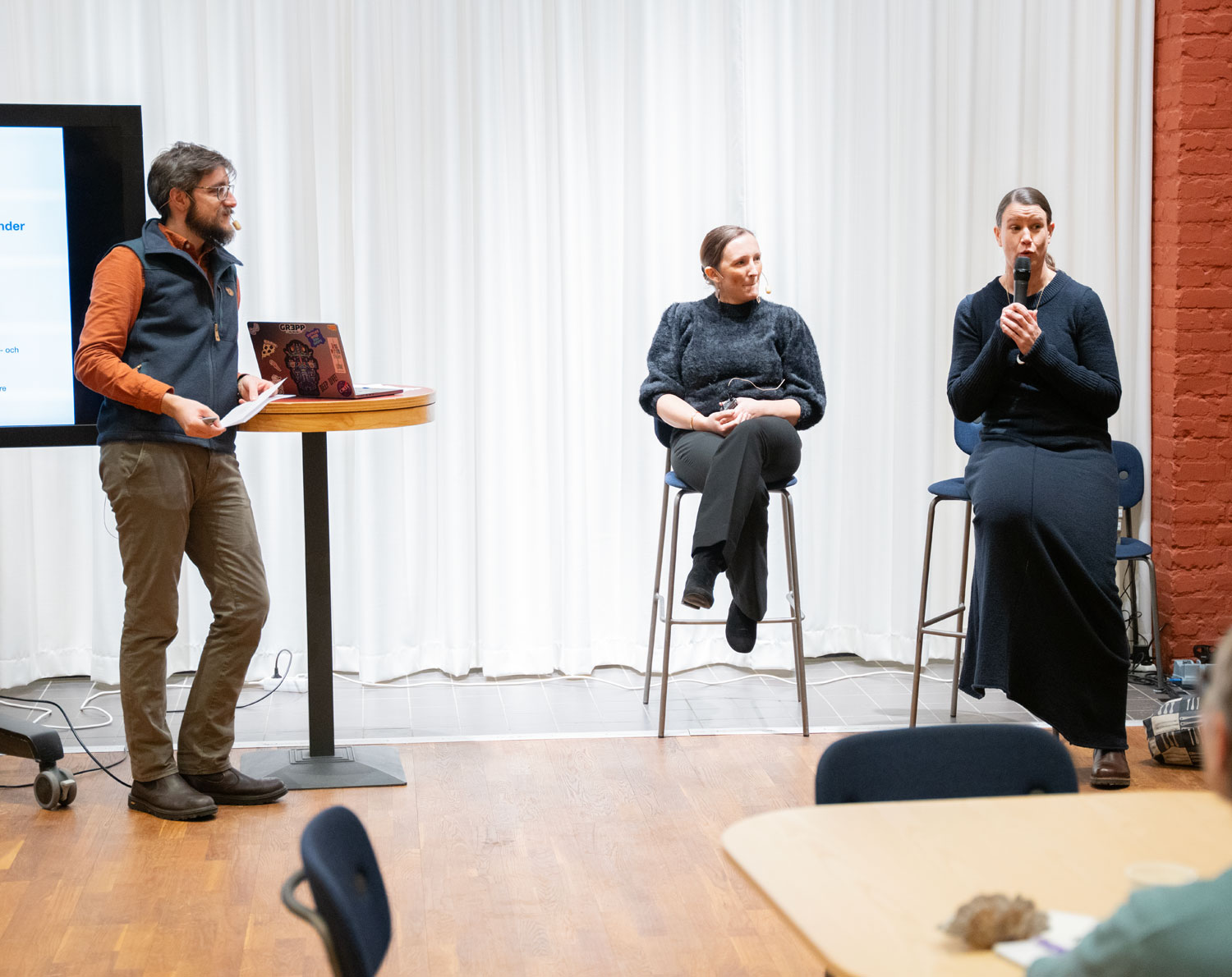Sustainability in focus at this year's last JU Live
Thursday 30 November, marked the final edition of this year's lecture series, JU Live. The speaker for the day was Thomas Cyron, Assistant Professor in Business Administration at Jönköping International Business School (JIBS), Jönköping University. The lecture focused on circular economy, what it entails, and how various actors in Jönköping can contribute.

Thomas Cyron
The lecture began with an overview of what the circular economy is. In brief, it involves reusing or recycling products and materials instead of extracting new natural resources, producing, consuming, and disposing of them. It is a form of a cycle that minimizes the use of Earth's resources.
The biological and technical cycles
Within the circular economy, two different types of cycles are discussed: the biological and the technical cycle.
The biological cycle involves the circulation of food and bio-based materials that are harmless to health and the environment. These are biodegradable materials designed to return to the biosphere (nature) without causing harm. For example, products in the biological cycle can generate fertilizer or biogas.
The technical cycle consists of products, components, and materials designed for reuse, repair, renovation, or material recycling.
“We should keep products for as long as possible to extract the ‘highest value.’ An alternative is, for example, to use products for purposes other than originally intended by reusing materials. By renovating a product it can be transformed into a completely new one,” Thomas Cyron said in his lecture.
Thomas Cyron also discussed the Swedish Government's goals for making Sweden more circular. This is to be achieved through four focus areas:
- Circular economy through sustainable production and product design;
- Circular economy through sustainable ways of consuming and using materials, products, and services;
- Circular economy through non-toxic and circular cycles;
- Circular economy as a driver for business and other actors through measures that promote innovation and circular business models.
You can read more about the Government's goals here (in Swedish): https://www.regeringen.se/globalassets/regeringen/bilder/klimat--och-naringslivsdepartementet/klimat-och-miljo/cirkular-ekonomi---strategi-for-omstallningen-i-sverige/
Major challenges
Sweden faces significant challenges even if it is among the leading countries in recycling and reuse. For example, Sweden has a very large production of so-called "virgin materials" i.e., newly extracted materials not part of the cycles, such as much of the steel and wood production.
“The circular economy can contribute to a sustainable future if it also leads to an absolute reduction in resource consumption,” Thomas Cyron explained.
Regarding the circular economy in the Jönköping region, there is much work to be done. The region ranks second to last among all regions in Sweden according to a Circular Economy Index for Sweden, developed by, among others, Almas Heshmati, Professor in Economics at JIBS.

Thomas Cyron, Mariana Morosanu and Therese Silvander
After the lecture there was a panel discussion between Thomas Cyron, Therese Silvander, environmental engineer and change leader in energy and transportation systems at Sweco with extensive experience in sustainability issues, and Marianaa Morasanu, sustainability strategist at Region Jönköping County. They discussed, among other things, that today it is largely the private sector driving sustainable transformation – previously it was primarily the public sector – and when the private sector is on board, progress is swift. They also highlighted several good examples of circular economy initiatives in Jönköping, such as Circular Center, Cykelköket, RE:match, and circular economy initiatives at Asecs shopping center.
This was the last edition of this year's lecture series JU Live, but the concept will return next spring with more interesting lectures and discussions.
